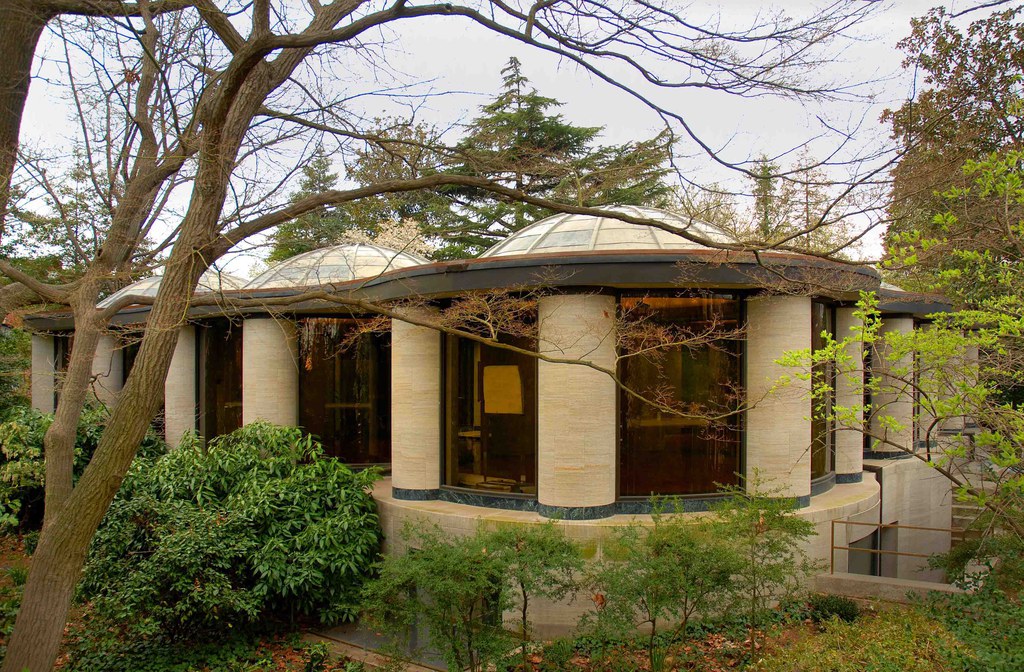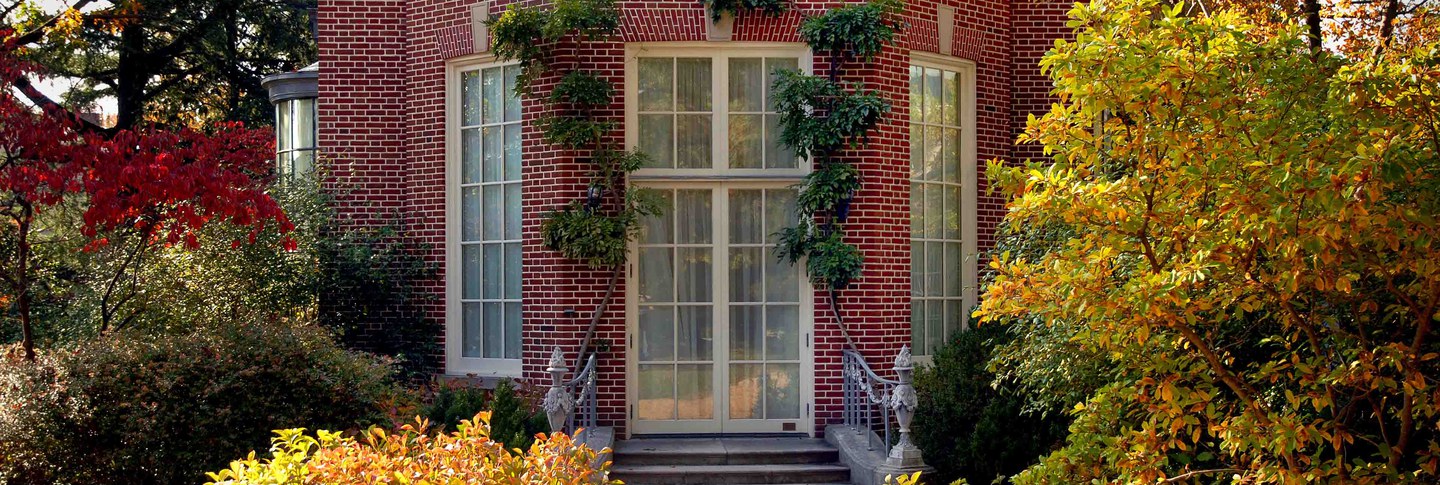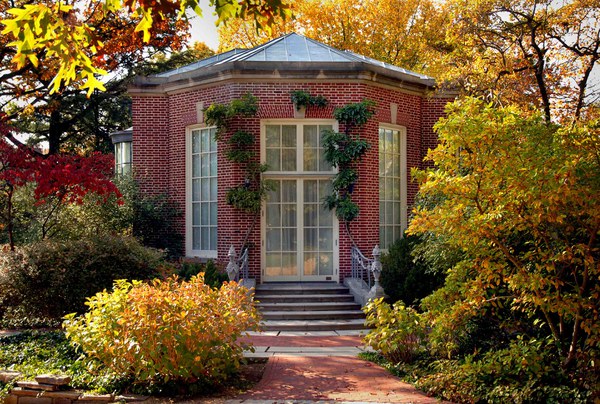In 2013 Dumbarton Oaks will celebrate the fifty-year anniversaries of two important constructions: the Rare Book Reading Room, which houses our rare and unique books and manuscripts; and the Pre-Columbian Gallery, which displays our collection of Pre-Columbian works of art. The two wings, though both completed in 1963, could not be more distinct in style.
The Rare Book Reading Room, which stands at the southwest end of the main building, was designed by the architect Frederic Rhinelander King (1887–1972). King, cousin of the novelist Edith Wharton, belonged to the same social orbit as Robert Woods Bliss (1875–1962) and Mildred Barnes Bliss (1879–1969), who donated Dumbarton Oaks to Harvard University in 1940. King’s design, aimed to recall the grandeur of the French eighteenth century, is well suited to the historical nature of the rare books, drawings, and manuscripts it houses. The look speaks to a strong strain within American culture that seeks out inspiration in the Old World and Enlightenment.

Projecting to the north of the main building, in the opposite direction from the Reading Room, are the eight domes, with a central fountain, that constitute the Pre-Columbian Gallery. Commissioned in 1959 to showcase the Robert Woods Bliss Collection of Pre-Columbian Art, it is remarkable for its interaction with the trees surrounding it. Thanks to their curves and glassiness, the octet of curving cells blends in with the nature around it, and the objects displayed within seem to float against the world outside. At the same time the architecture gestures to the Islamic world, particularly to Turkish structures of the Ottoman period. In sum, the Gallery is anything but traditional European in either its design or its artworks (if the term artworks is not itself a Western imposition!).
Robert Bliss did not survive to witness the completion of the two edifices, since he died the year before, but his widow Mildred lived on through most of the decade. It is a tribute to the scope and flexibility they retained even as octogenarians that they should have envisioned a complex of buildings that could harmonize two additions as distinct in style and function as the Rare Book Reading Room and the Pre-Columbian Gallery have been for the past half century.
To mark the anniversaries, we will celebrate not just the spaces themselves but also the uses for which they were established. The Blisses intended their buildings, grounds, and collections to serve both advanced scholars and the general public. Without interrupting experts who need library materials and without jeopardizing the proper protection of those materials, we are planning a series of small guided tours to the Rare Book Reading Room and the Pre-Columbian Gallery. Visits will be complemented by an ambitious calendar of talks, lectures, workshops, colloquia, and symposia. Through such activities we do our part to uphold the causes of the humanities and advanced research, while familiarizing the public with our complex missions—in historic preservation, innovative scholarship, and broad dissemination—and demonstrating their ultimate oneness.

